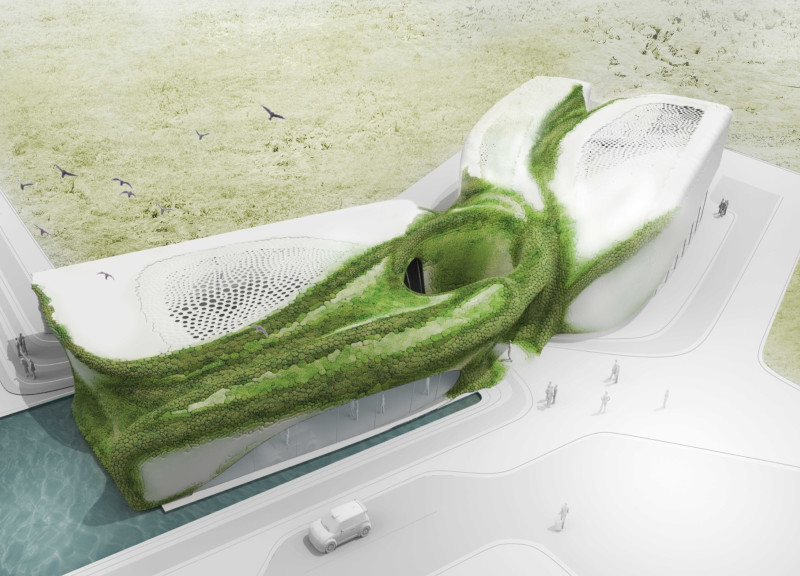5 key facts about this project
The main function of the Myvatn Volcano Museum is to provide an educational experience that delves into the science and history of volcanic activity in the region. The museum features exhibition spaces that host interactive displays, educational programs, and community events, all aimed at enhancing public understanding of Iceland's distinctive geology. Additionally, it includes amenities such as a café and visitor information center, ensuring a comprehensive visitor experience.
A distinctive aspect of the project is its bioreceptive design. The architects have opted for materials that enable the growth of moss and algae on the building's surface. This innovative approach not only allows the museum to blend into the landscape aesthetically but also fosters biodiversity. The porous nature of the bioreceptive concrete used in the façade invites flora to flourish over time, further connecting the structure to its natural surroundings and creating a dynamic relationship between the architecture and the environment.
The museum’s exterior design features smooth, flowing forms that mimic the topography of the volcanic mounds and craters found in Myvatn. This organic architectural style is complemented by large glass sections that offer views of the surrounding landscape, thereby fostering a seamless connection between indoor and outdoor spaces. This thoughtful use of transparency enhances natural lighting within the building while encouraging visitors to engage with the natural scenery.
Internally, the design prioritizes flexibility and adaptability. The layout includes designated zones for exhibitions, workshops, and community gatherings. The ability to reconfigure these spaces allows for various uses, from temporary installations to larger community events. This functional versatility is a key planning element, reflecting the museum's goal to serve as a hub for both education and interaction with the local community.
The roof of the Myvatn Volcano Museum is another vital aspect of its design, featuring large overhangs that provide shelter and create outdoor terraces. These areas serve as vantage points for visitors to appreciate the striking landscape while offering space for outdoor activities or informal gatherings.
In summary, the Myvatn Volcano Museum stands as a notable architectural project that harmonizes with its environment. By implementing bioreceptive materials and organic forms, it emphasizes sustainability while providing a rich educational resource for visitors. Those interested in further exploring the architectural ideas and design details will benefit from reviewing the architectural plans and sections, which provide deeper insights into this innovative project. This museum is not only a tribute to the region’s geological beauty but also a model for how architecture can sympathetically coexist with nature, enriching community engagement and understanding.


























